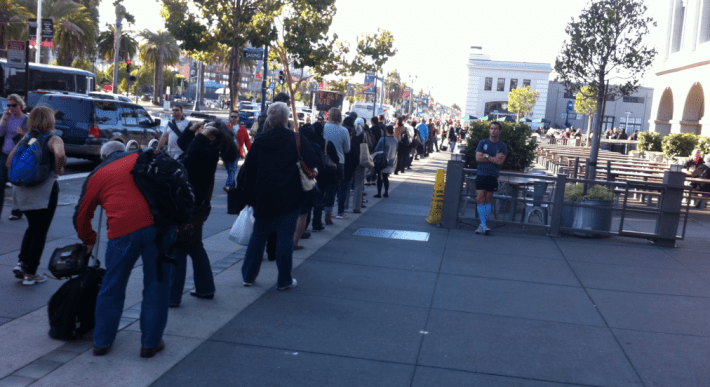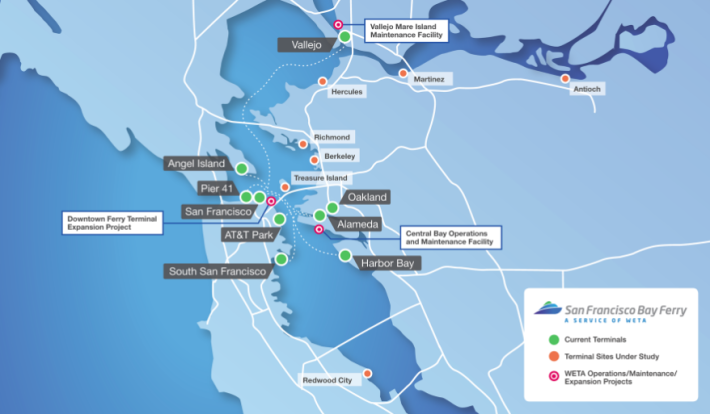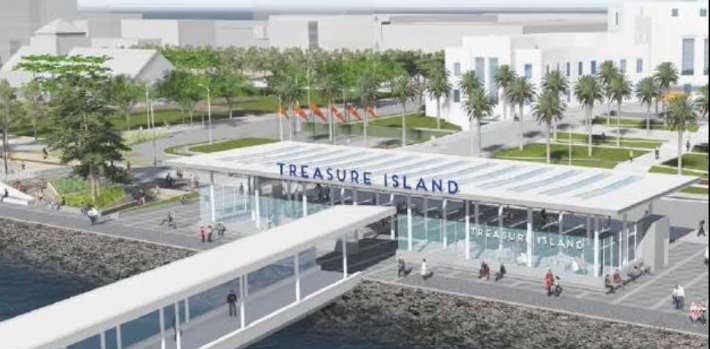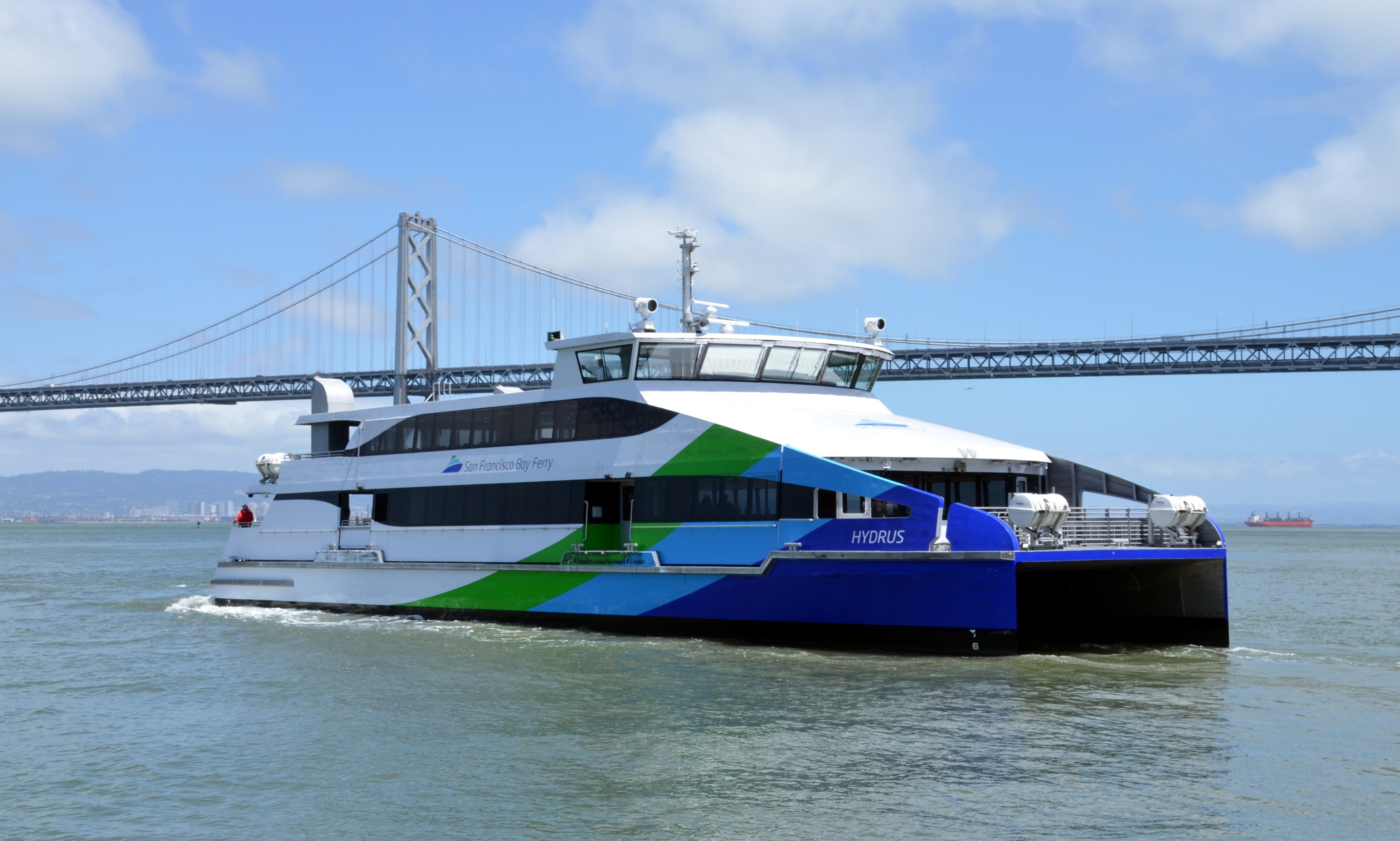They're relatively slow and don't carry nearly as many people as BART or the Bay Bridge, but during rush hour the Bay Area's ferry services provide essential relief to a transportation system that's bursting at the seams. "We carry about four percent of Trans-bay ridership in the peak hours," said Kevin Connolly, manager of planning and development for the Water Emergency Transportation Authority (WETA), at a talk at SPUR about the role of ferries in Bay Area transportation. “That doesn’t seem like a lot, but it’s the equivalent of three BART trains or 48 buses in the peak hour."
But even the ferries are becoming overcrowded during rush hour. Unlike with a BART train, safety and the laws of buoyancy prohibit squeezing more and more people on board. "We leave people behind every day because of a hard cap on our ridership; we have a desperate need to expand capacity," said Connolly.

Compared to any other option for expanding transit capacity, it's pennies on the dollar to add ferry services. That still can mean sizable investments for dredging, building new terminals and maintenance facilities, and buying more boats. But it is happening. "There will be five new boats on the water by 2020... And we have the expansion of the San Francisco ferry terminal itself, which will triple our capacity," said Connolly.

So how will the region pay for a huge expansion in ferry services? "A potential solution is Regional Measure 3 (RM3), a $4.5 billion measure that would massively enhance transit capacity on BART, bus, and the ferry system," said Emily Loper, Policy Director at the Bay Area Council, who also spoke on the SPUR panel. "Most other transportation improvements involve big capital investment and twenty or thirty years to build. With just new operating funds, just $17 million, our ferry services can double their capacity."
Loper explained that RM3, if the voters approve it, will provide $300 million in capital and up to $35 million in operating revenue for ferries. That will let ferries "rapidly expand service, not just with increases in frequency on existing routes, but also to expand to new locations."

"Mission Bay is a new terminal that's currently being designed, with a target date of opening by 2019 or 2020," said Connolly. There are also new terminals being developed, sometimes in conjunction with new housing developments, at the Alameda Seaplane Lagoon Terminal, Redwood City, and elsewhere. "We have a 2024 target date for Treasure Island," he said.
But not everyone on the panel agreed that constructing big terminals with long planning timelines and running large ferry boats is the way to go. "In 2014, we won a contract with the Port of San Francisco to provide water taxi services," said Nathan Nayman, president of Tideline, which provides a water-taxi service using small boats that carry between 25 and 45 people. Currently, they operate three boats from Berkeley and Napa. "We carried 25,000 passengers from March through December of last year... and we don’t receive subsidies."
The company's smaller boats don't need deep ports--and the dredging they often require. As a result, they can dock at existing launches and get services up and running without a big planning and construction process. They're also looking at boats with "carbon hulls and battery technology" that will run on emissions-free propulsion.
He said the company is negotiating deals with Chariot and other ride-sharing services, so customers have a way to get from the shore to their jobs and homes. They're trying to coordinate schedules with Amtrak and AC Transit.

While that will no doubt make the boat service easier to use, it also highlights the obvious limitation of ferries. "The ferries work well if you can walk to the terminal, but if you have to transfer they are far less attractive," said Richard Barone, Vice President for Transportation at New York's Regional Plan Association (NY's equivalent to SPUR).
New York has undergone a resurgence in ferry service over the past few years. It doesn't carry huge numbers of people relative to the subway, buses, and commuter trains, but Barone explained it has been very useful for commuters traveling between Jersey City and Lower Manhattan--both have high concentrations of residences and jobs that are a short walk from the Hudson River. "Folks who use them really love them because the commute is really nice... a ferry is a paradise by comparison to riding the subway."
He added that the ferries are helpful in emergencies. "Ferries are a great redundant system... on 9/11 they were critical and helped move a lot of people when the PATH Train subway was down." Connolly agreed and said they run scenarios about how ferry boats can be used during disasters and major BART problems.
Still, Nayman said the key is to have a diverse and flexible system, with small, privately run boats complimenting the larger, government-subsidized ones. He cited plans to anchor future Treasure Island developments to a large ferry terminal as a misapplication of the big-ferry model. In his view, it makes more sense to shuttle people back and forth with smaller boats running frequently since the voyage only takes ten minutes. "Do we need a $50 million ferry terminal on Treasure Island and Mission Bay?"

For more events like these, visit SPUR’s events page.





